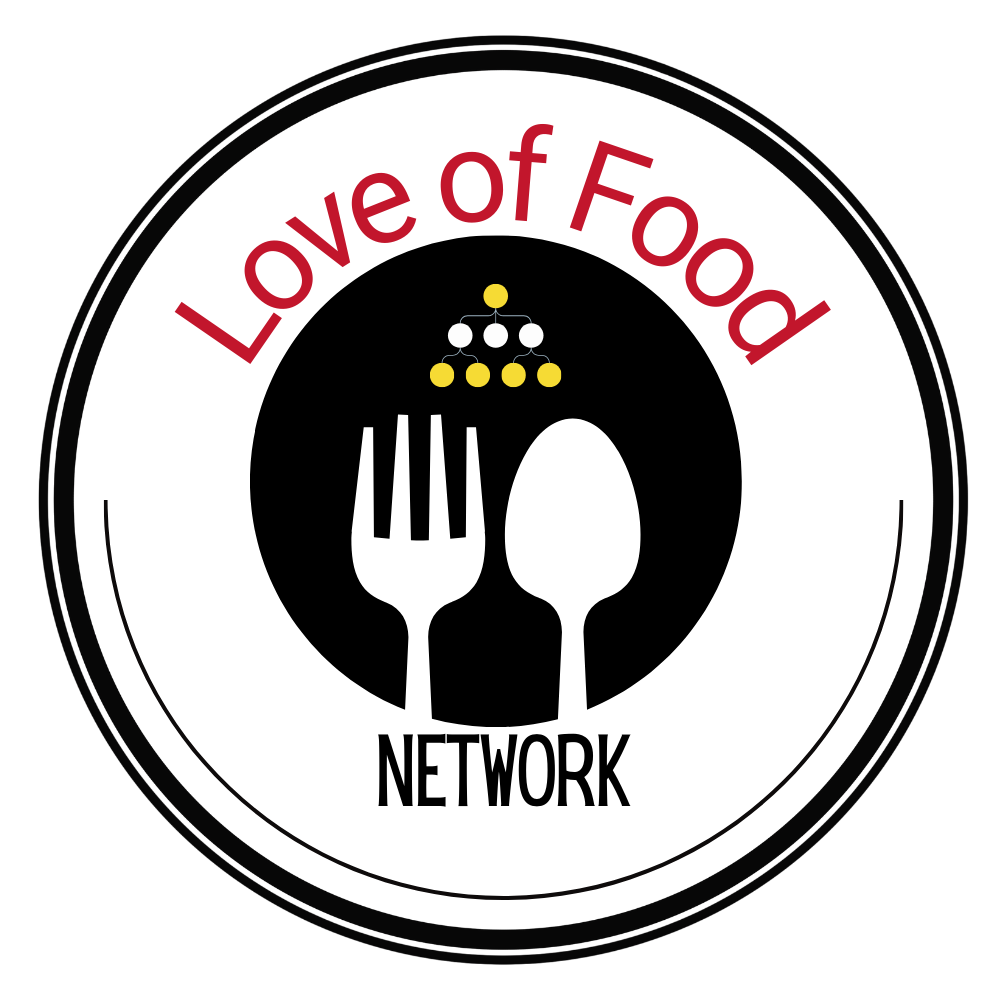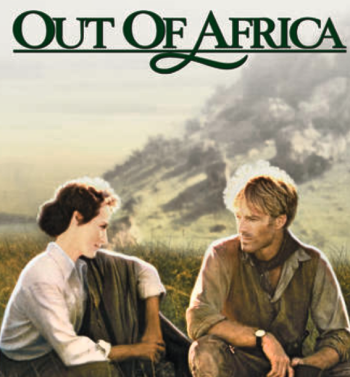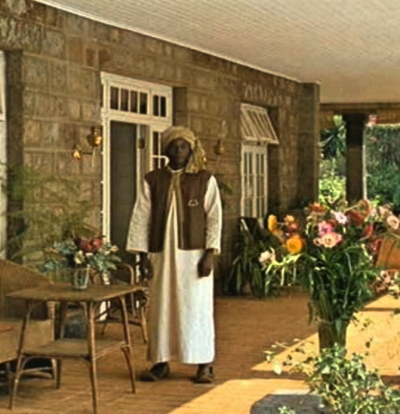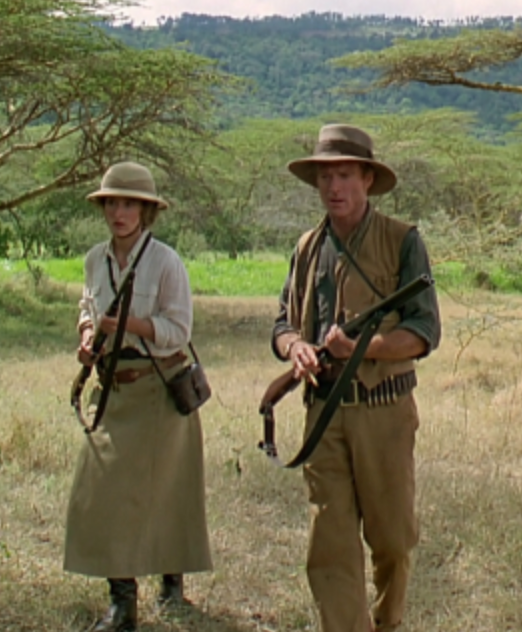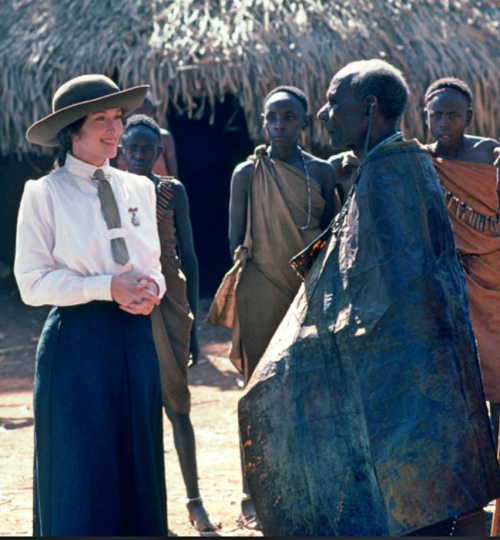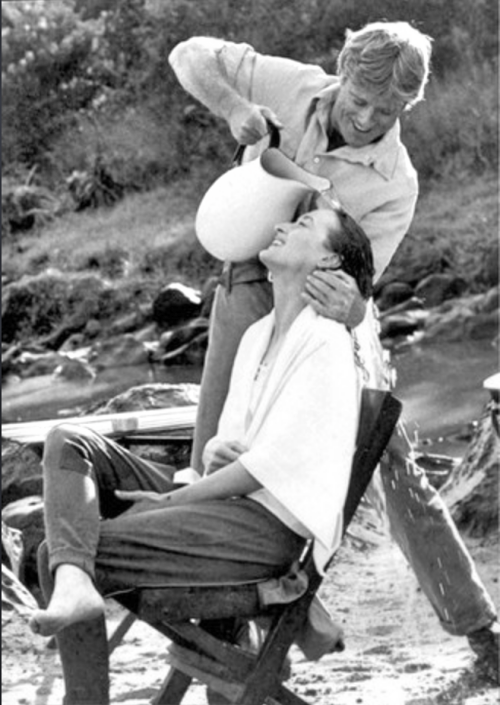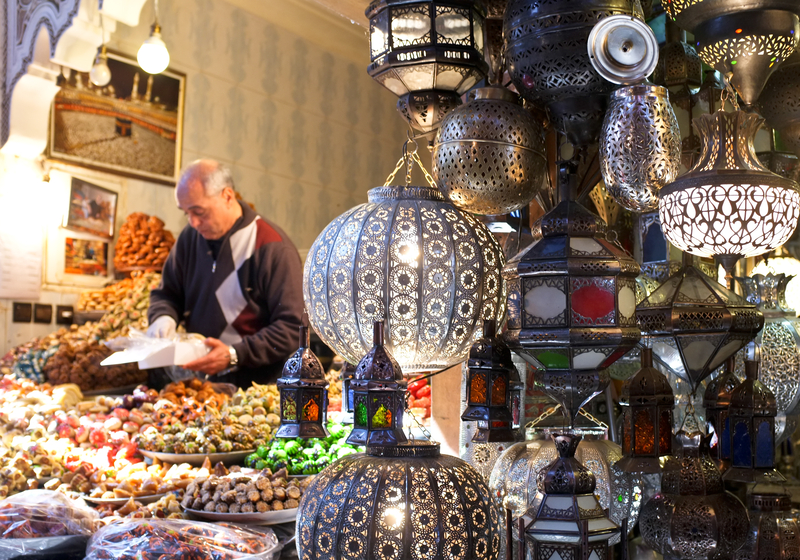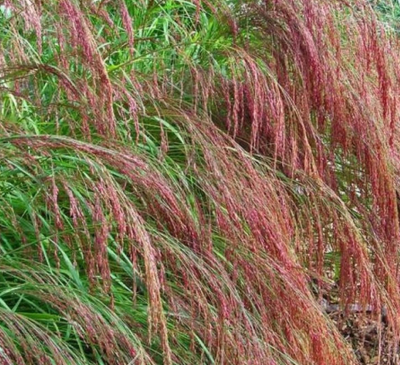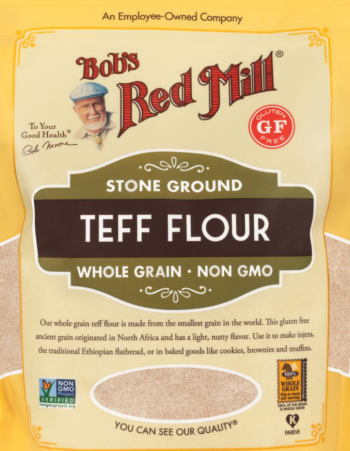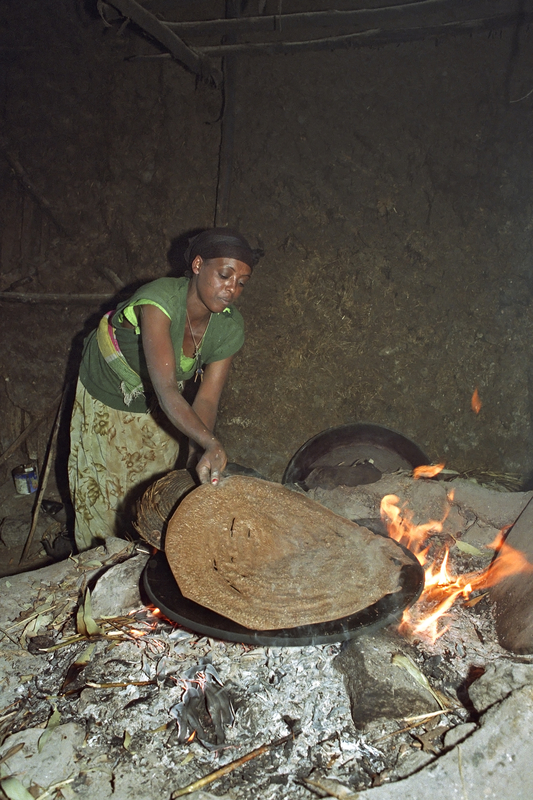It was in 1985 that I fell in love with Africa. I found myself sitting in a movie theater watching Meryl Streep play the famed Karen Christine Dinesen later to become Karen Blixen. Her character was introduced in 1937 by Author Karen Blixen also known as Isak Dinesen. The book is a bit different from the movie that won 7 Academy Awards that year but Meryl Streep and Robert Redford were stunning in their parts as the leading man and lady. I own the book, it is one of my most treasured gifts from my husband.
The screenplay tells the story of a Danish woman who has failed to marry. Rather than stay at home and care for her aging mother, she negotiates with her friend Baron Bror Blixen to marry her for her dowry. Her journey begins when they move to Nairobi (the Capital of Kenya) Africa to start a farm. The plot has many twists and turns as Karen finds herself the proprietor and sole manager of a coffee farm. She is an independent woman who learns by experience how to deal with wild animals.
She navigates the culture of the various African tribes such as the Kikuyu, the Somalis. and the Maasai. She blossoms while winding her way through a complicated landscape which means even being misunderstood by those who should be her peers, the English locals. This story is set during a time when women were not treated equally to men. It takes place at a time in history when we were heading into World War 1.
The ways in which Karen deals with adversity, infidelity, and loneliness are on point. As are the love scenes between her and her lover, Denys Finch Hatton. Without giving the entire movie away I highly suggest you order this one up on Amazon Prime and watch it. It is worth the small streaming fee. I watch this movie at least once or twice a year. I still hang on to my seat at the suspenseful parts, laugh at the funny lines, and cry right along with Karen.
What Does This Movie Have to Do With Food You Ask?
Yes this is a food blog, however it is because of my love for Africa that began in 1985 that I can truly pour my heart into writing this article. I have vivid dreams of one day going there to fly in a hot air balloon over the Serengeti as I watch the animals roam and run beneath me. I will camp on safari and eat food that is cooked over an open fire. I will lunch on these Braai Broodjies, a South African barbeque sandwich, similar to our paninis except cooked over an open flame. You may have thought the food of Africa appears simple but I have come to learn the flavors are phenomenal.
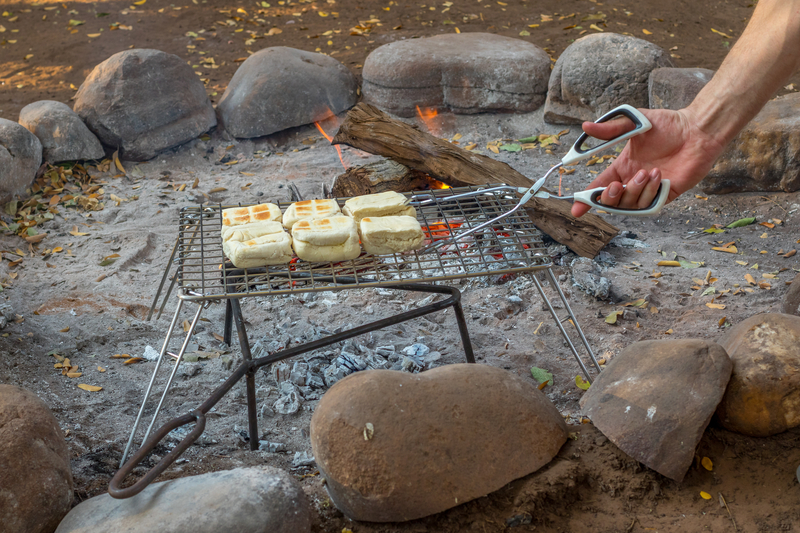
Braai Broodjies 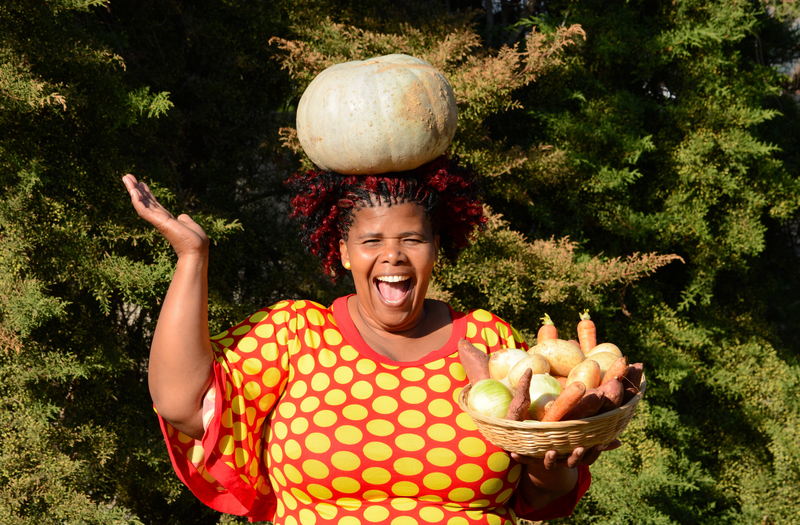
Our Visit with an Authentic African Cook
We had the opportunity to interview Mercy Kibe, founder of Mizizi Spices in Raleigh, NC. She moved to the United States from Africa and after earning her degree she decided to take the entrepreneurial route. She opened up an African spice company. She cooked for us the day of filming and I was impressed by how the spices in her foods opened up the food’s natural flavors. Below are some of the items she prepared for us. Believe me, they were as delicious as they look!
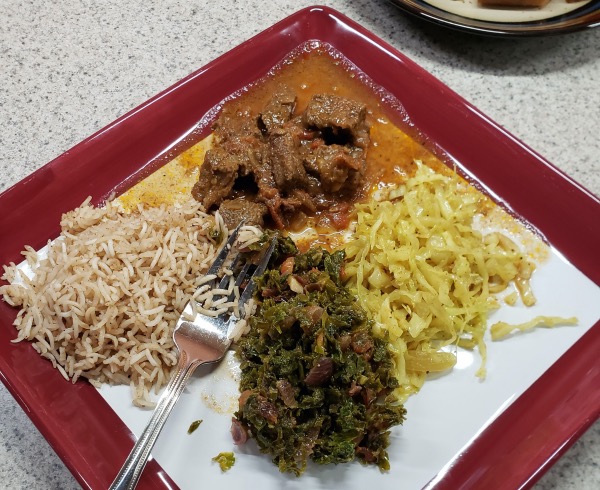
African Beef, Kale, Cabbage, and Rice
Watch the full interview with Mercy below.
The Continent of Africa
Africa is the second-largest continent in the world only to be outranked by Asia and it is surrounded by water from every direction. Africa is not only vast in its size, it is also diverse with many unique tribes of people all with their own traditions and unique foods and cooking styles. We could write for days about all of them in this article, however, in order to give you the taste of Africa, we will focus on just a few of the areas that will hopefully bring forward the depth of flavor that African food provides.
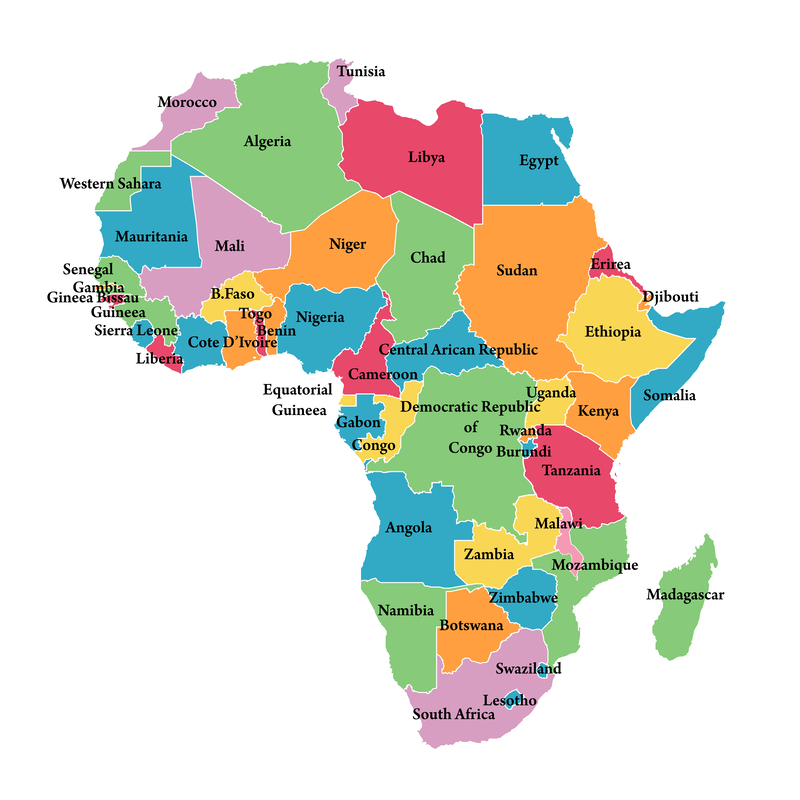
Kenya
The area of Kenya is the one most known and loved by tourists who visit Africa. The Maasai Mara National Reserve hosts a large population of protected species that can be photographed in their natural habitats, Mombasa beach is gorgeous for those who prefer the coastline. Lake Nakuru used to be well known for its flamingo population however I am told that rising waters have moved them away.
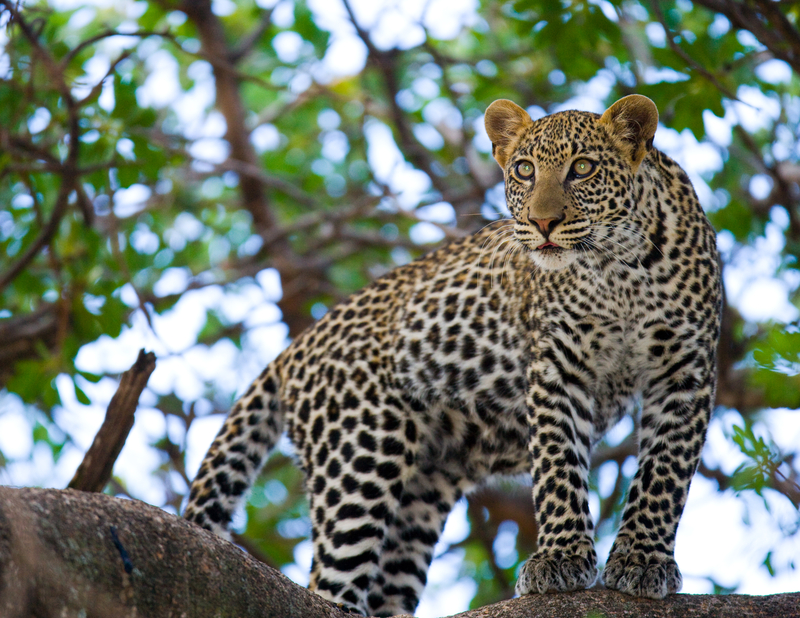
Maasai Mara National Reserve Wildlife 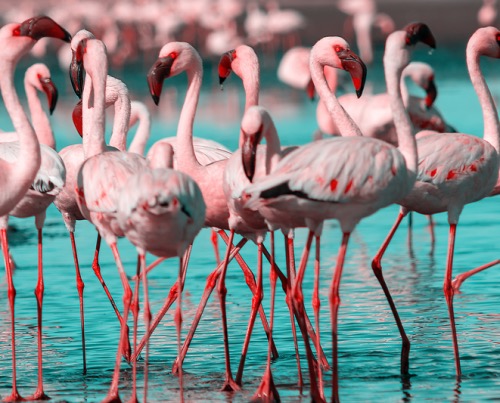
Lake Nakuru Flamingos
The Food of Kenya
The food of Kenya is made up of lots of vegetables, corn, rice, and some meats. I am told that kale/collards called “Sukuma Wiki” can be served up to five days a week in a typical Kenyan home. Pilau, which is spiced rice, is another common food served in Kenya. Meat also makes its appearance in Kenyan cooking. Nyama Choma is roasted meat cooked over an open flame and is usually from a goat or beef.
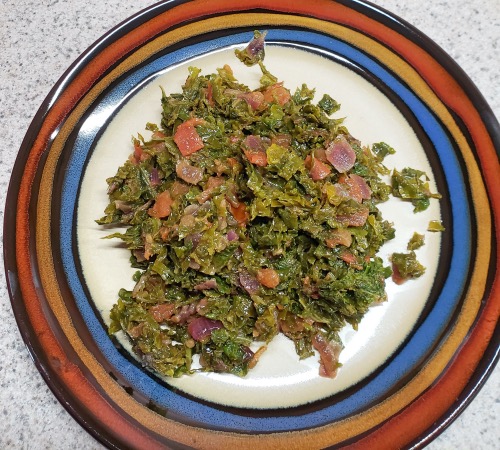
Sukuma Wiki 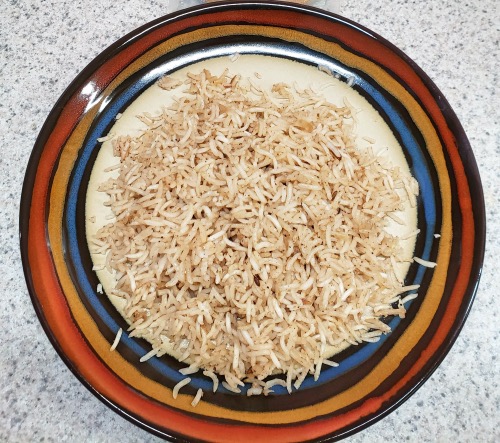
Pilau 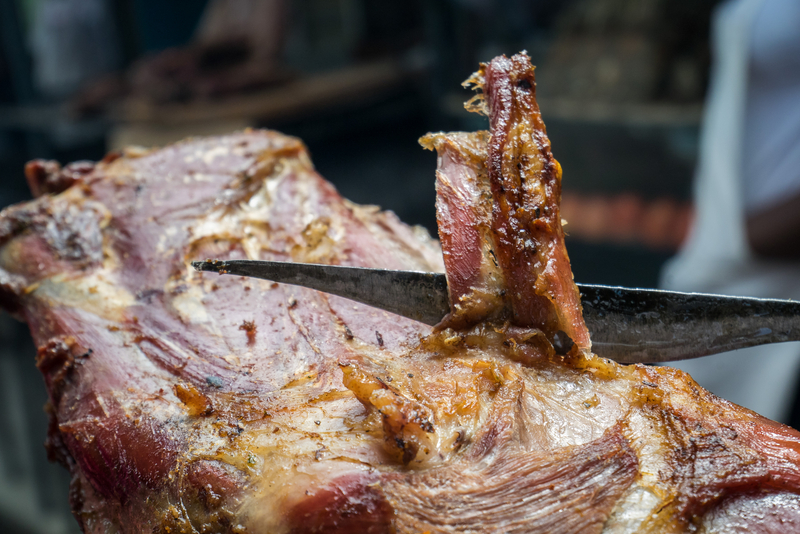
Nyama Choma
In Kenyan cooking, there is also a version of Beef Stew simply called Kenyan Stew. It has a tomato and onion base and it is also usually made from goat or beef. Ugali is a staple in Kenya, made from cornmeal. It is boiled until it forms a pasty consistency. Similar to grits, this dish keeps everyone full. Irio is a popular Kenyan dish made up of sweet potatoes, peas, and corn. Traditionally the peas would be mashed and the dish would be more green, however, this Irio is much more pleasing to the eye with all the same flavor. It may be served as a side dish or as an entre’. You may see some similar foods in other areas of Africa outside of Kenya, though each region brings something unique to the table.

Kenyan Stew w/Sukuma Wiki and Ugali 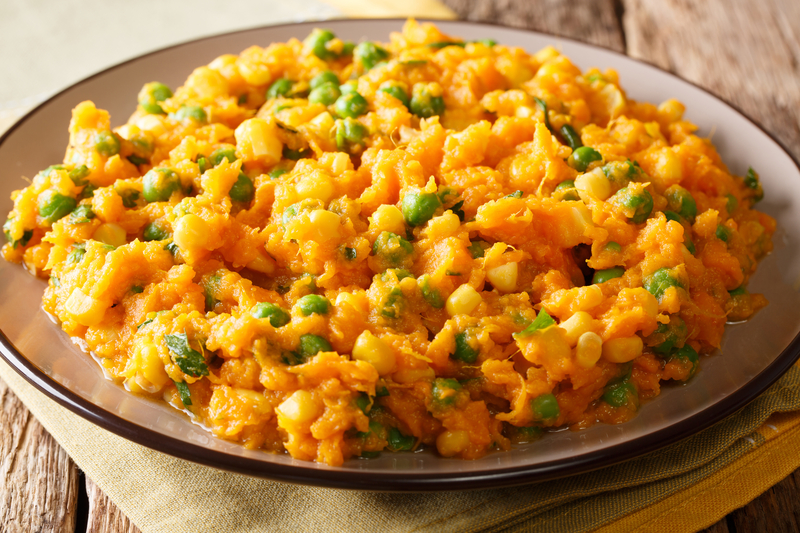
Irio
Senegal
Senegal sits on the most western point of Africa. It is known as a society of artists and storytellers. Its capital is Dakar a city on the Cape Verde peninsula. Senegal was under French rule until as late as 1960. It is smaller in size compared to many other African countries, however, we wanted to include it because it is big in flavor. Its grasslands, tropical rainforests, and proximity to the ocean provide the perfect environment for harvesting a wide variety of foods.
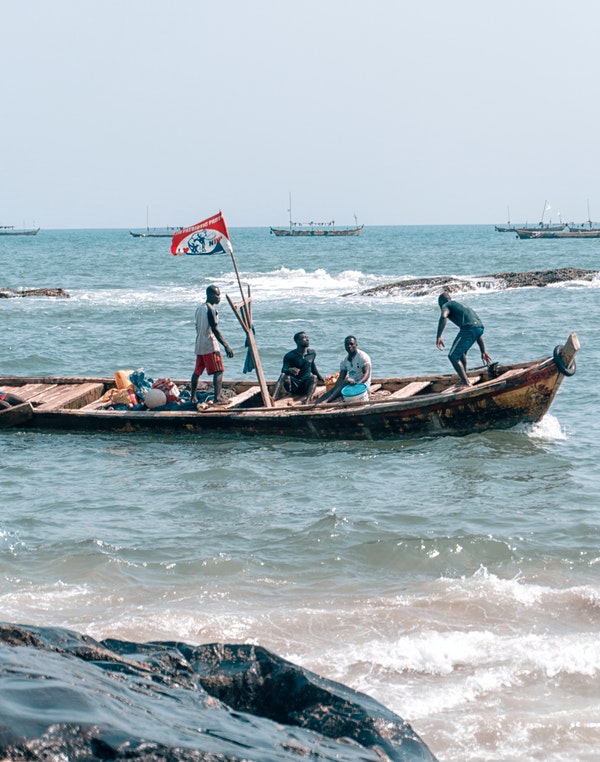
Men Fishing on the Shores of Dakar 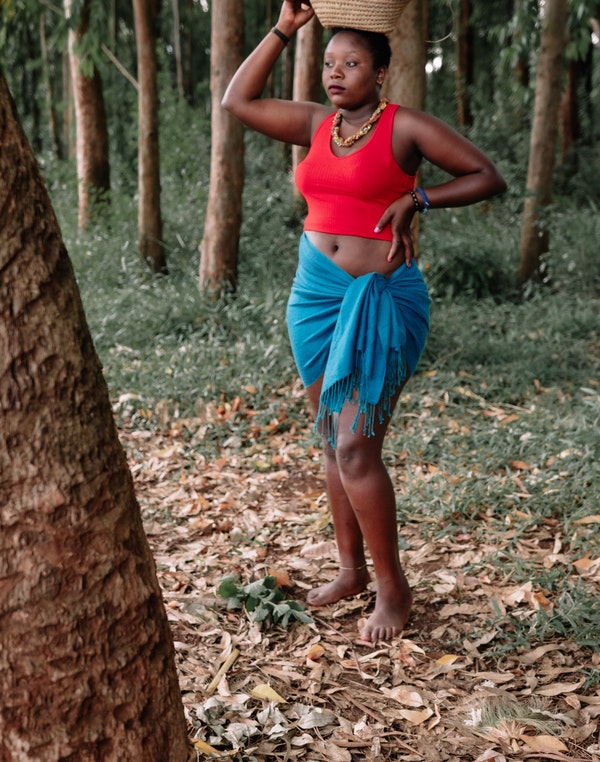
Woman Carrying Fruits from the Rain Forest
The Food of Senegal
Its seashore provides ocean treasures like Tuna, Swordfish, Sole, and Monkfish so it is no wonder fish is the main staple food in Senegal. Add to that the many cultural influences that contribute to its cooking styles from France to Vietnam and you have a recipe for food success. Senegal has a unique variety of tropical fruits such as dates, coconut, papaya, and pineapple to name just a few. Its vegetables Okra, Cassavaroot, and Eggplant offer a savory accompaniment to those sweet rich fruits.
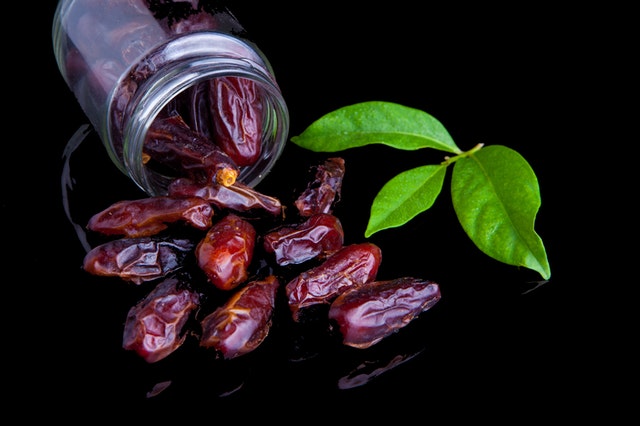
Dates 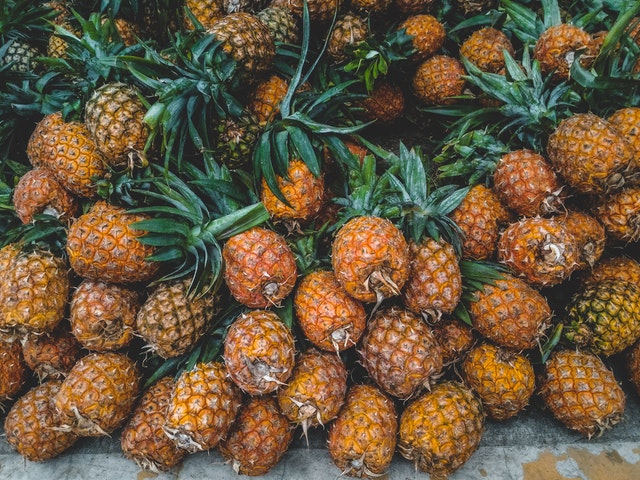
Pineapple 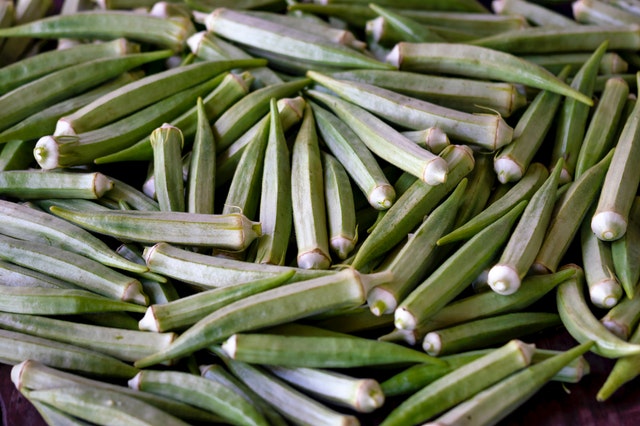
Okra
Pair any of these with its wide choice of native seafood and you have a grocery list that any contestant on The Food Network’s popular show Chopped would kill for. Meat can be found in Senegal but due to the fact that it is a Muslim country, your choices will likely be limited to mutton, goat, and chicken. You may find your dish served with a grain such as Fonio or Millet and be given a slice of Chapati (unleavened bread) to scoop your food with. Dishes like Thieboudine a mix of fresh and dried fish or grilled Thiof a white meaty grouper stuffed with vegetables and spices.
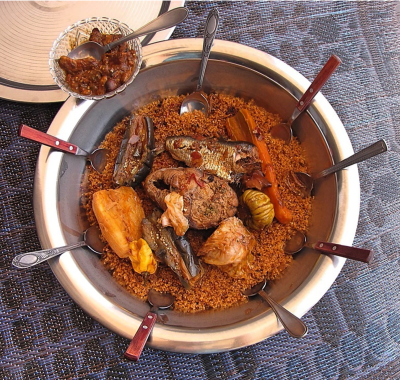
Thieboudine 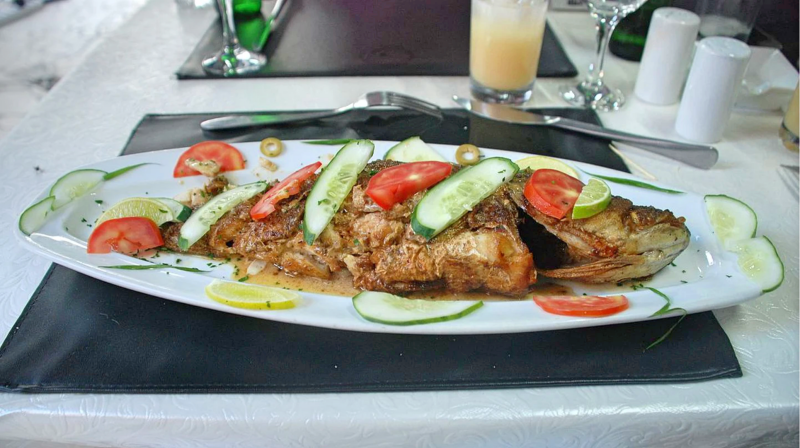
Thiof
Morocco
Morocco lies in Western North Africa with a border to the Atlantic Ocean directly across from the Strait of Gibraltar from Spain and borders the Mediterranean Sea. Morocco also boasts these majestic mountains aptly named the Atlas mountains. The largest port is Casablanca and yes, that is the name used in the famous 1943 movie starring Humphrey Bogart, however, it was not filmed in Morocco so the movie never really portrayed the rich culture of this city.
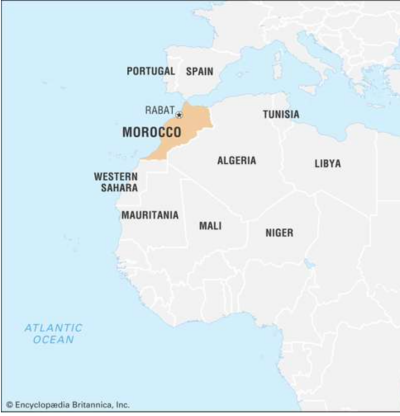
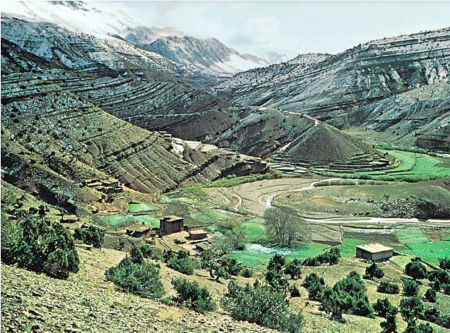
The Atlas Mountains Surround a Valley in Morocco
by Victor Englebert Photo Researchers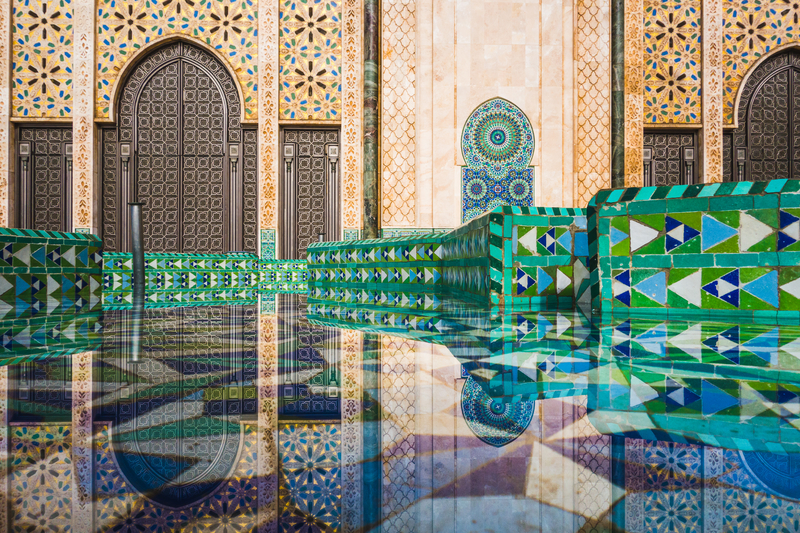
The Food of Morocco
Dried Fruits are plentiful, figs, apricots, dates, and of course olives. Morocco is the world’s second-largest producer of olives. You may try them Lemon-Cured or in Harissa (red chili and tomato paste mixture with spice).
Bocadillo is a Moroccan Sandwich very similar to the Spanish version made with sausage. Both use a baguette as the vessel however in Morocco the common filling flavors are tuna, potato, egg, and olives served with a side of chili paste. You may opt for something a bit lighter when eating Moroccan food, Why not use a native grain as a base for a salad. This one below is made with Couscous and its nutty flavor, paired with some fresh greens, flavorful herbs and spicy radish will make you smile.
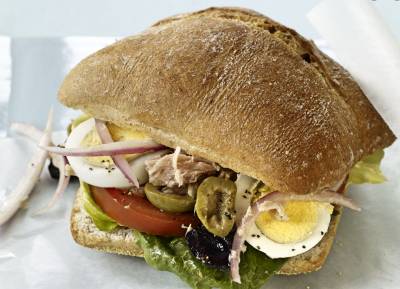
Bocadillo by The Spruce Eats 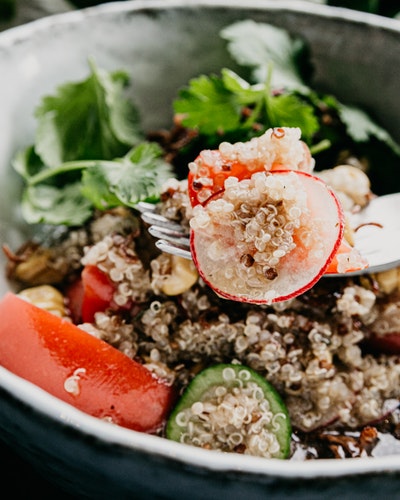
Couscous Salad
Moroccan Cooking Techniques
If you have never cooked in a Tagine you can pick one up at your local cooking store or for a more stylish addition to your kitchen, at World Market for under $50.00.
Cooking with a tagine has some rules:
- Season it before using it
- Never place on direct heat, use a tagine heat diffuser
- Wash by hand, do not soak in soapy water
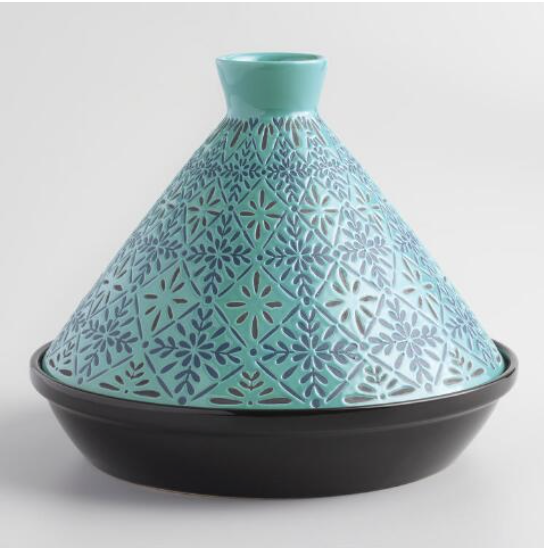
Tagine 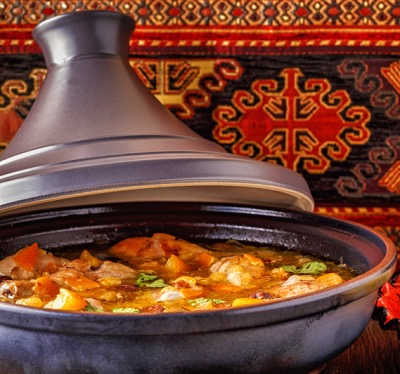
Chicken Tagine
Ethiopia
I am writing about Ethiopia last and not because of any other reason than we will visit an Ethiopian restaurant to finish this article. I am curious to see how the most populated landlocked country in the world, whose population is only second to Nigeria will impress me personally.
Ethiopia is known for producing honey and coffee and has the largest livestock population in Africa. Ethiopia sits just above Kenya and next to it is Somalia. Somalia has the longest coastline on Africa’s mainland. Perhaps you have heard of its capital city, Mogadishu.
We visited Nafkot Ethiopian Restaurant early on a Friday night in Raleigh, We walked into a brightly lit, clean establishment. The first thing that caught my eye was an African mural of a safari that encompassed the entire back wall. In front of the wall on a platform was a box filled with cups, an incense burner, and a coffee urn I would come to know as Jebana. Alongside all of that was a bowl of popcorn. I was intrigued and a little excited because I knew I was about to embark on a unique, culinary adventure.
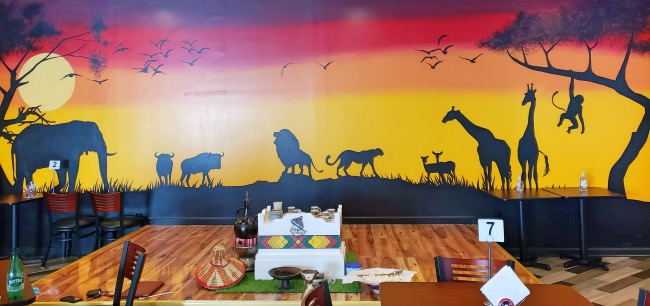
Behind me was a display of African Art created in multiple mediums, folk-type dolls, clay vessels, and portraits of the Ethiopian people. I smelled an amazing fragrance of burning frankincense and possibly myrrh as I turned around I saw a table to my right being served a pot of coffee with this incense smoke dancing all around them. I could not help but spy a bowl of popcorn being placed on the table next to the coffee. I let my waiter know I wanted that to start with. He smiled and said in a very thick Ethiopian accent “no, that is to finish the meal”. He pointed to the platform where the large coffee urn sat and said this is the custom. Popcorn for dessert? What? I am very confused. I scoured my menu and found the Ethiopian Ceremonial coffee with popcorn. I would just have to wait until after my meal to discover how popcorn tasted with coffee.
The Food of Ethiopia
To start, my dining companion ordered a Guava and Papaya juice drink. It was very pretty. I did not taste it however his description was thick, sweet, and filling. Perhaps more like a fresh juice or smoothie without the ice. For our entree’s we ordered Lega Tibs which is beef tips, with rosemary, onions, and carrots in a special butter sauce. The beef was tender and the sauce was clean tasting with almost a hint of citrus. In addition, we ordered the Awaze Tibs which was also made of beef tips, the flavor was completely different. This dish had some hot chili, just enough. The Awaze Tibs main flavoring is from a Yawaze paste made with mead and honey. The spiciness of the pepper with the sweet from the honey was perfectly balanced so that it made you want to go back for another bite. We waited a good amount of time for our food but when it arrived, I realized it had all been made fresh to order and I will wait any day for good food,
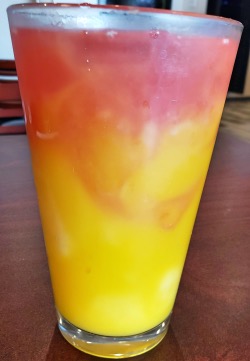
Guava Papaya Mix 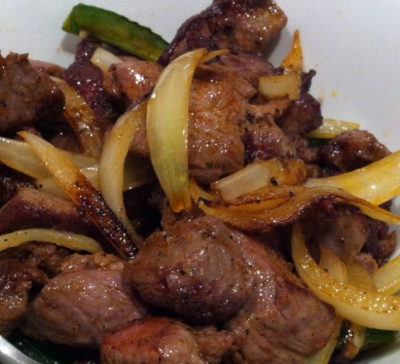
Lega Tibs 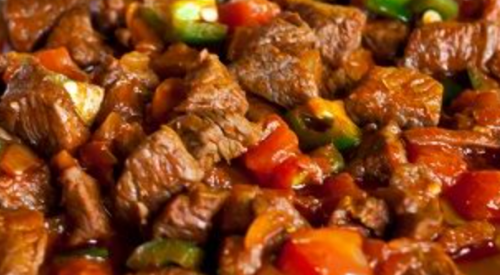
Awaze Tibs
The bread called (Injera) arrived first in a big metal serving dish. This bread was a brownish/gray color with a spongy texture. Injera is a fermented unleavened sourdough made from Teff flour. Teff is one of the ancient grains from Ethiopia. It is one of the smallest grains and is perhaps closer to a grass than a grain. Teff flour is gluten-free and high in fiber. You can find it in Bob’s Red Mill line. If we were visiting Ethiopia we would see Injera being cooked over an open flame.
Our server then arrived with our entrees and spooned out some of each onto the large tray of Injera. He asked if we know how to eat it and we had to admit we did not. He tore a piece of napkin and made a scoop with his fingers and said just like this, but use the bread. How much fun is this? We will eat our entire meal with our hands.
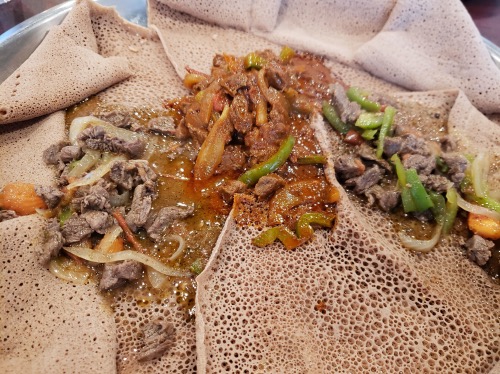
With full bellies, it was time for our Ceremonial Ethiopian Coffee with Popcorn. The coffee called Jebena Buna arrived and it was poured into small demitasse cups. We were offered whole brown sugar to add, but no creamer. This coffee was meant to be enjoyed for its high flavor, low acidity, and an almost citrusy aftertaste. The popcorn was placed on the table and then the incense arrived. We sipped on the coffee and tasted the popcorn with it. Why did the popcorn work with the coffee? I found out it was popped in coconut oil. Think sweet popcorn and bitter coffee. I asked our hostess the owner, Selam, why the popcorn is part of the ritual and she replied because it is happy corn. I suppose that is right… can you be unhappy while eating popcorn? I think not. We enjoyed the incense fragrance as much as the taste of our coffee and popcorn.
We left relaxed, full, and happy. I suppose that is Selam’s goal for every guest. I have to admit we did not know what to expect in our culinary journey to Ethiopia and we were ecstatic with the experience. We can’t wait to visit again.
In the movie “Out of Africa” there is a scene where Karen tells her guests a story, that takes place in a land far away. When asked if she had visited the country that she is describing she simply says ” I have been a mental traveler”. We hope you have enjoyed being a mental traveler along with us on our African Journey.
